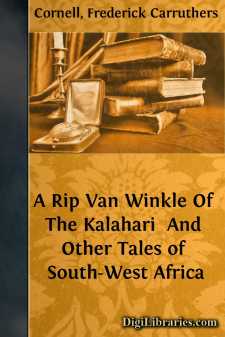Categories
- Antiques & Collectibles 13
- Architecture 36
- Art 48
- Bibles 22
- Biography & Autobiography 813
- Body, Mind & Spirit 142
- Business & Economics 28
- Children's Books 17
- Children's Fiction 14
- Computers 4
- Cooking 94
- Crafts & Hobbies 4
- Drama 346
- Education 46
- Family & Relationships 57
- Fiction 11829
- Games 19
- Gardening 17
- Health & Fitness 34
- History 1377
- House & Home 1
- Humor 147
- Juvenile Fiction 1873
- Juvenile Nonfiction 202
- Language Arts & Disciplines 88
- Law 16
- Literary Collections 686
- Literary Criticism 179
- Mathematics 13
- Medical 41
- Music 40
- Nature 179
- Non-Classifiable 1768
- Performing Arts 7
- Periodicals 1453
- Philosophy 64
- Photography 2
- Poetry 896
- Political Science 203
- Psychology 42
- Reference 154
- Religion 513
- Science 126
- Self-Help 84
- Social Science 81
- Sports & Recreation 34
- Study Aids 3
- Technology & Engineering 59
- Transportation 23
- Travel 463
- True Crime 29
A Rip Van Winkle Of The Kalahari And Other Tales of South-West Africa
Description:
Excerpt
PREFACE
MOST of these stories were written on the veldt; at odd times, in out- of-the-way prospecting camps, in the wilds of the Kalahari Desert, or of that equally little-known borderland between Klein Namaqualand, and Gordonia, Cape Colony, and what was at that time known as German South- West Africa.
Four of them appeared a few years back in The State an illustrated magazine now unhappily defunct; the others, though written about the same time, have never been published.
And now, time and circumstances have combined to bring the scene in which they are laid most prominently before the public.
Through the dangerous and difficult barrier of the desert sandbelt that extends all along the coast, General Botha and his formidable columns forced their way to Windhuk; from the remote lower reaches of the Orange River other troops steadily and relentlessly pushed north; and even to the east the well-nigh unexplored dunes of the southern Kalahari proved no safeguard to the Germans, for Union forces invaded them even there: and all eyes in South Africa are to-day turned towards this new addition to the Union and the Empire.
Whilst imagination has naturally played the chief part in these tales, the descriptions given of certain parts of this little-known region are accurate, and by no means overdrawn; at the same time, though they treat principally of the dangerous and waterless desert, it must be borne in mind that although the sand dunes form one of Damaraland's most striking features, yet it is by no means altogether the barren, scorching dust-heap it is popularly believed to be.
For once the sand region bordering the coast is traversed, and the higher plateau begins, vegetation and water become more abundant, the climate is magnificent, and cattle, sheep and goats thrive; whilst in the north much of which remains practically unexplored there is much fruitful and well-watered country teeming with game, and akin to Rhodesia, awaiting the settler.
Mining and stock-raising are the two great possibilities in this new country, where water conditions are never likely to allow of extensive agriculture being carried out successfully.
But above all mining! For much of the country and especially the north is very highly mineralized. Copper abounds; tin and gold have been found and there can be but little doubt that the former will eventually be located in abundance and, above all, the diamond fields of the south-west coastal belt have since their discovery in 1908 added enormously both to the value of the country and to its attractiveness.
To refer again to these tales; the description of Rip Van Winkle's ride through the desert, the sand-storm, the huge salt "pans," and indeed most of the earlier incidents, have been but common-place experiences of my own in the wastes of the southern Kalahari, slightly altered for the purposes of the story. Even the "poison flowers" exist there and no Bushman will sleep among them, beautiful as they are. And lest the huge diamond in the head of the "Snake" in the same story be considered an impossibility, let it be borne in mind that the Cullinan (enormous as it was) was but the fragment of a monster that must have been every whit as big as the one I describe....


